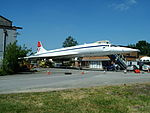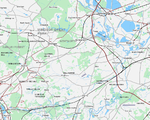Heathside School

Heathside School is a co-educational secondary school for students aged 11–18 situated in Brooklands Lane, Weybridge, Surrey, England. The Executive Principal is Anne Cullum.The school used to be a Foundation Community Technology College in affiliation with the Diocese of Guildford. The school is also affiliated with the Specialist Schools and Academies Trust.The Good School Guide described the school as a "Winning combination of committed staff and eager students – state education as it should be". In its 2018 report Ofsted described the school as a Good School.In September 2022 Heathside School will be opening a sister school, Heathside, Walton-on-Thames, to be built on greenbelt land. On 4 June 2020, Elmbridge Borough Council approved the plans with local MP Dominic Raab describing it as "an important step towards a great new local school".
Excerpt from the Wikipedia article Heathside School (License: CC BY-SA 3.0, Authors, Images).Heathside School
Brooklands Lane, Elmbridge
Geographical coordinates (GPS) Address Phone number Website External links Nearby Places Show on map
Geographical coordinates (GPS)
| Latitude | Longitude |
|---|---|
| N 51.36466 ° | E -0.46518 ° |
Address
Heathside School
Brooklands Lane
KT13 8UZ Elmbridge
England, United Kingdom
Open on Google Maps











